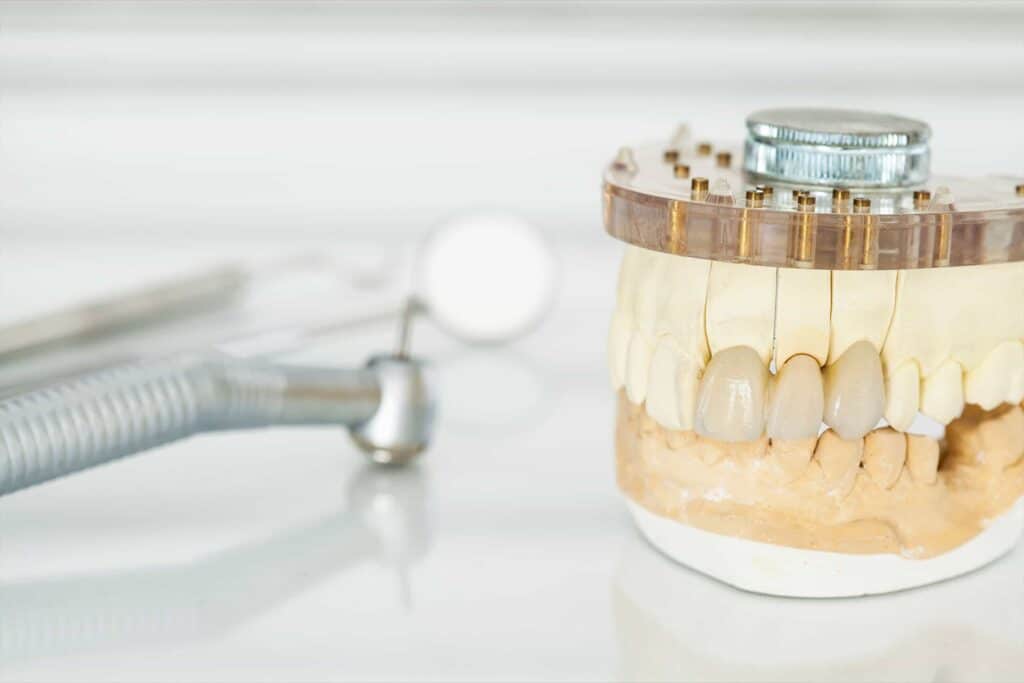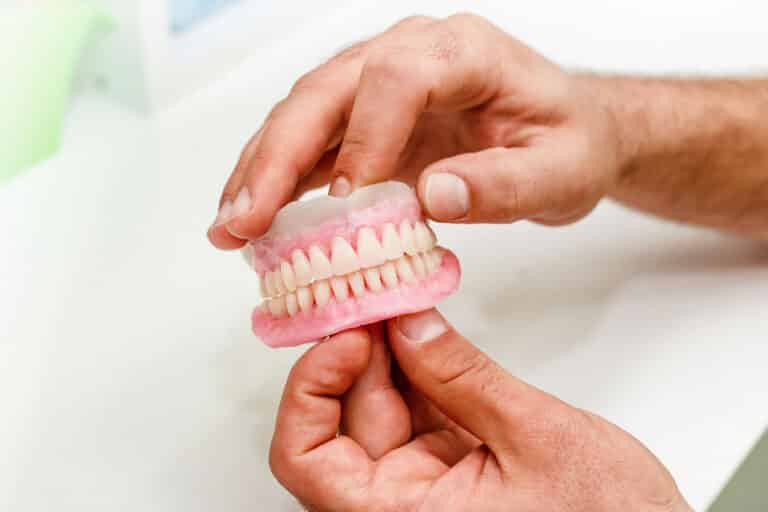A dental retainer is an orthodontic apparatus that patients have to wear when their braces come off. Retainers are custom-made for every patient, primarily of materials such as plastic and metal. If you’ve ever undergone orthodontic treatment, you likely wear a retainer every night to keep your teeth from shifting back to before you were fit for your braces.
What are the Different Types of Dental Retainers?
There are many different types of retainers. The type your dentist chooses for you will depend on what kind of dental work you’ve endured and your preferences. Regardless, they’ll all effectively keep your teeth in place.
Permanent or Bonded Retainers
Bonded retainers have a solid, twisted wire that curves to fit the shape of your teeth precisely. The wire is bonded (or cemented) to the inside of your front teeth to stop them from shifting, and dentists often use them on lower teeth.
Bonded retainers can be helpful when an orthodontist believes that the teeth are prone to relapse or when the variable removable retainers are not worn consistently. This is a very common type of retainer as they are “set it and forget it”.
Clear Plastic Retainers
Thermoplastic retainers, also known as “molded retainers”, are custom to fit the shape of your new smile. Before creating the retainer, your orthodontist will take a mold of your teeth. You can snap clear plastic retainers on and off as you wish, but you should wear them every night or for the length of time per day that your orthodontist advises.
Hawley Retainers
Hawley retainers are the classic wire retainer. Unlike bonded wire retainers, Hawley’s are removable, constructed of thin metal wire and plastic to fit the shape of your mouth. The wire runs across the outside of your teeth, maintaining alignment.
Adjustments to Hawley retainers are relatively simple, and they last for longer than clear plastic retainers. However, they might affect your speech more noticeably than other retainer types. Typically it affects the sibilant or “S” sounds.
When Do I Need to Wear a Dental Retainer?
You should wear a retainer when you’ve had dental work done that affects the alignment of your teeth or in other words after you have completed orthodontic treatment. While retainers are most common after concluding braces treatment, there are other instances that you might need a retainer, so it’s essential to keep open communication with your provider.
Tooth Extraction
Dental retainers have one purpose; to keep your teeth from moving. In most cases, people wear retainers because they’ve had a lengthy braces treatment. However, your dentist might have you wear one after a tooth extraction to keep your other teeth from shifting and crowding too far into the open spot until the gap can be closed with a more permanent solution.
Can Retainers Help with Grinding?
Depending on the type of retainer, it may be able to help with grinding. However extremely heavy grinders may need a different solution such as a hard night guard. Teeth grinding is an issue you’ll want to discuss with your orthodontist or dentist because it will give them a better idea of what might be best for you.
A night guard can stop grinding, relieve tooth pain and stabilize the jaw joint. They alleviate many of the symptoms that come with consistent tooth grinding.
Do Dental Retainers Hurt?
Dental retainers might be uncomfortable at first, depending on which type you and your dentist choose, but they should not cause any direct or searing pain. You may experience some soreness in the first few days of wear, which will dissipate over time.
If your retainer causes great distress or extreme discomfort, you should speak with your dentist or orthodontist. This usually means the retainers don’t fit well and may need to be remade. If not worn consistently, retainers can present with a constant, dull ache initially that will fade within one week. Consistent use of your retainers should not be painful to wear.
How Much Do Dental Retainers Cost?
Like most dental procedures, the cost of retainers can vary from practice to practice and, of course, by type. Although not exact, you can expect dental retainers to approximately cost the following:
- Permanent Retainers: $150 to $600
- Clear Plastic Retainers: $100 to $300 (per tray)
- Hawley Retainers: $150 to $340
Dental Retainers and Insurance
Paying out of pocket is out of the question for many. Usually some form of retainers are included in complete orthodontic treatment. If you have dental insurance, there’s a high possibility that one set of post-treatment retainers will be covered. This aspect depends heavily on your insurance company, so ensure you contact your insurance company prior to starting treatment. You can also ask the dentist performing the treatment if retainers are included.
How Long Do I Have to Wear a Retainer?
The tongue in cheek answer is you need to wear retainers for as long as you want to keep your teeth straight. When you first have your braces removed, you’ll have to wear your retainer very consistently for at least a few months. It is extremely common and easy for your straight teeth to regress and become crowded.
Retainers are completely necessary to keep your teeth aligned after months to years of working to straighten them. If you neglect to wear them, your teeth can easily move back. Following the instructions of your dentist or orthodontist is the key to the best experience.





